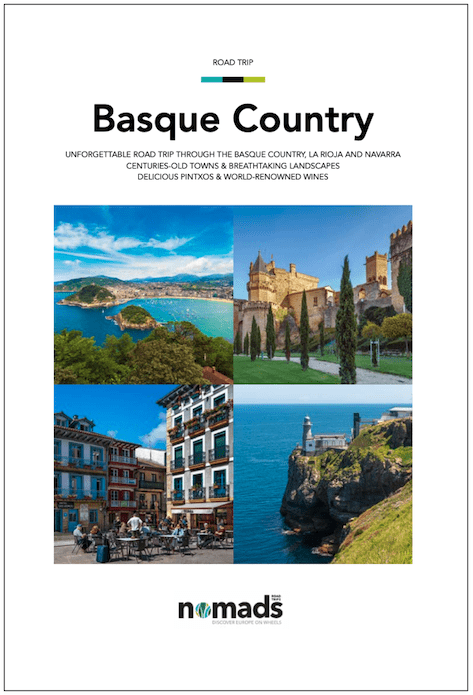
Catalonia
This 1092 km road trip through Catalonia is full of art and nature. It takes you through 4 Catalan provinces and past bustling Barcelona. On this road trip, you will discover the beautiful, varied nature that Catalonia has to offer. You drive along the golden sandy beaches and wild coasts of the Costa Brava and Costa Daurada, through coastal cities where you cannot look past the art of Salvador Dali and Antoni Gaudi, to the fertile plains of Lleida and the high mountains of the Spanish Pyrenees. Those who explore Catalonia's interior will be richly rewarded!
Highlights on this itinerary include the Dali villages of Cadaqués and Figueres, the medieval towns of Peratallada and Girona, the beaches of Blanes, the nature reserve above Barcelona and the monastery of Montserrat, the golden beaches of the Costa Daurada with the towns of Sitges and Tarragona, the Parc Nacional d'Aigüestortes in the Pyrenees with the Vall d'Aran (the valley of valleys), the dwarf state of Andorra and Lake Banyoles.
- Perfect travel companion if you want to discover Catalonia by motorhome, car or motorbike
- Clearly divided into 8 stages with 66 places of interest, travel tips, 21 hiking routes, 22 cycling routes, local tourism services and places to stay (112 campsites and 35 motorhome sites)
- Available as PDF (travel guide 90 pages) in beautiful design, illustrated with inspiring texts and high-quality photography
- Includes interactive map for PC, tablet or smartphone so you have all information at hand on the road
- Includes GPX files so you can download the full route and all cycling and walking routes onto your GPS
Read the first chapter
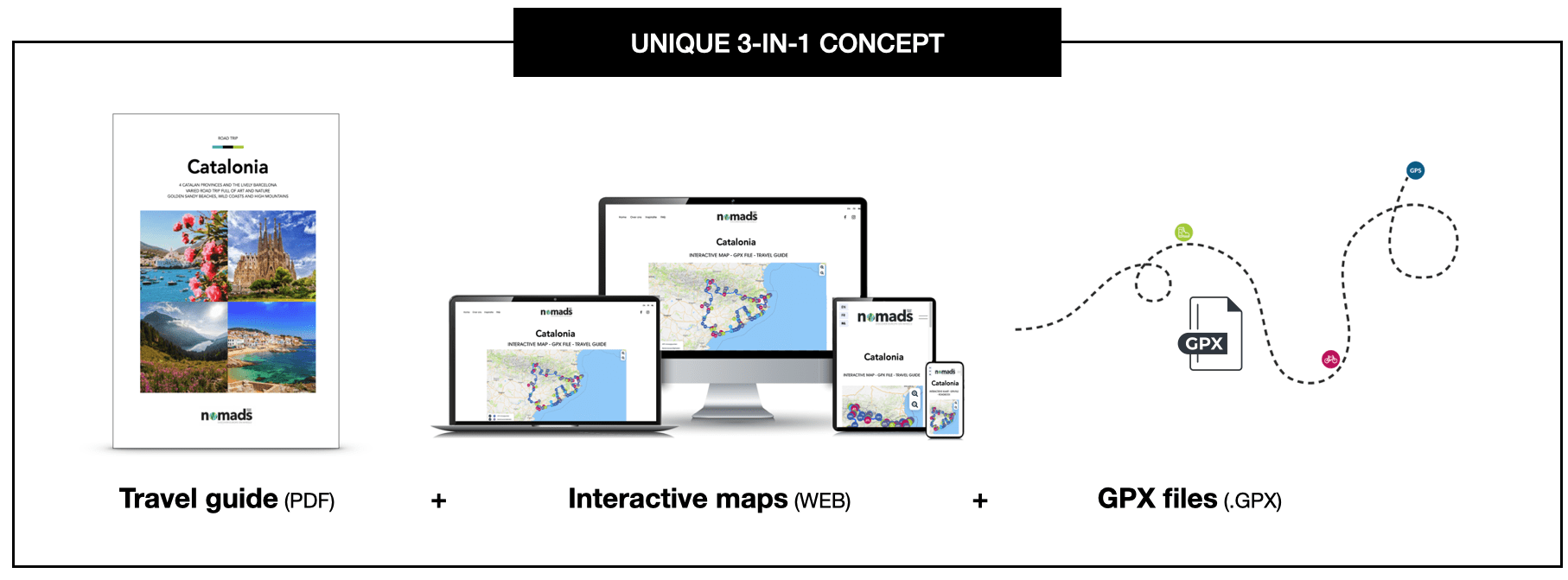
Some highlights on this road trip
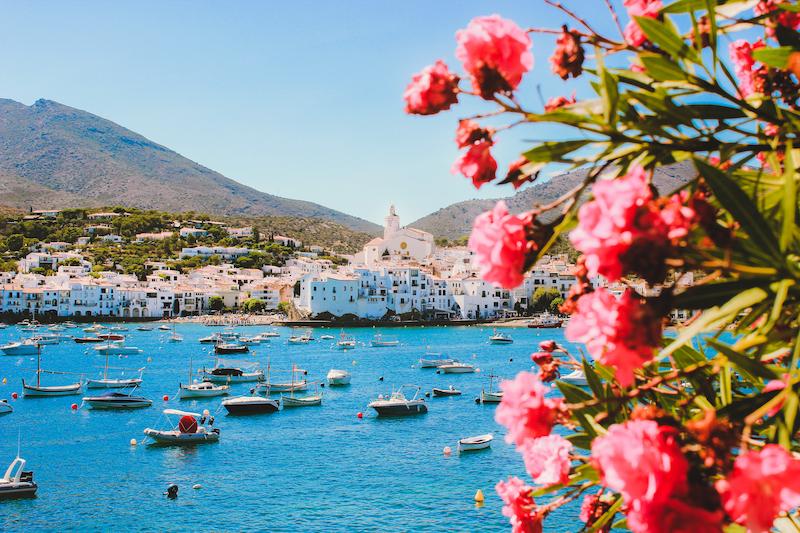
Cadaqués - Peratallada
We start our road trip in Cadaqués in the province of Girona which is blessed with both mountains and sea. Cadaqués was called the 'St. Tropez of Spain' during the 1960s. Numerous young people moved to the resort because of Salvador Dalì who stayed in Cadaqués six months a year from 1930 until his death in 1989. Cadaqués is an artistic town that can only be reached via a steep mountain road.
Then we drive to Figueres, the market town of the Empordà plain. Figueres is the birthplace of Dalì and in the Teatre-Museu Dalì you can admire the life and work of the eccentric artist. With Sant Marti d'Empúries, we are gradually entering the ‘real’ Costa Brava. The wild coast stretches for about 200 km and is more than just the tourist resorts of Lloret de Mar and Tossa de Mar. The rocky capes and pine-forested beaches of the northern Costa Brava are noticeably quieter than further south. Sant Marti d'Empúries lies next to the ancient Greek town of Empúries or Emporion, where numerous Greco-Roman remains can still be seen.
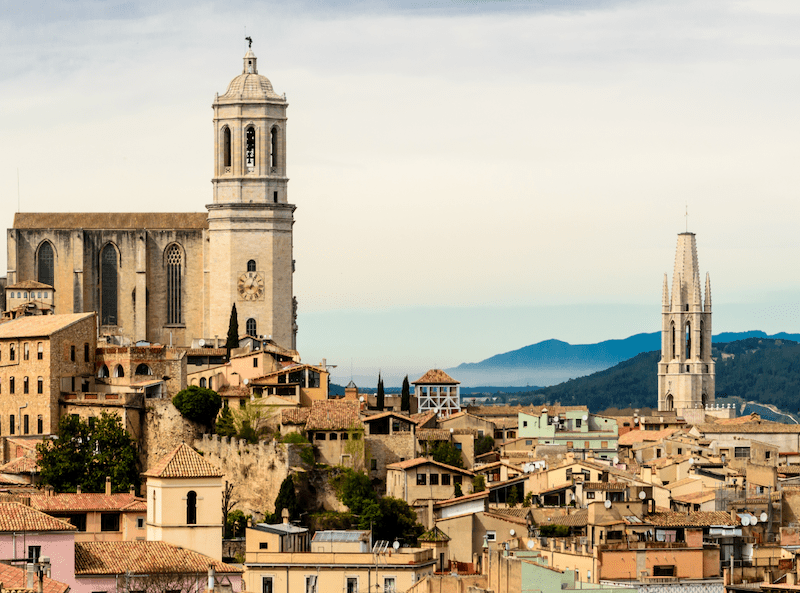
Peratallada - Arenys de Mar
The village of Peratallada is one of the most spectacular inland villages just behind the Costa Brava. It forms a 'golden triangle' of medieval villages with Pals and Palau Sator. Peratallada is situated on top of a mountain and offers sublime views of the surroundings.
We travel deeper inland to Girona, the capital of the province with the same name. Girona in Catalan, Gerona in Dutch and Spanish, is the perfect city to get to know the Catalan culture. There are numerous historical sites and museums to visit. You can easily spend more than one day there. Stroll through the historic centre and the old streets. At the Riu Onyar you have a beautiful view of the high, pastel-coloured houses that rise above the water. After Girona, we drive back to the Costa Brava where we follow the coastline to Arenys de Mar.
On the way, be sure to stop at Sant Feliu de Guíxols and Tossa de Mar. The latter is located at the end of a winding coastal road. Turissa is a Roman town which many consider to be one of the most beautiful on the Costa Brava. The harbour town of Blanes with its long beaches is also recommended.
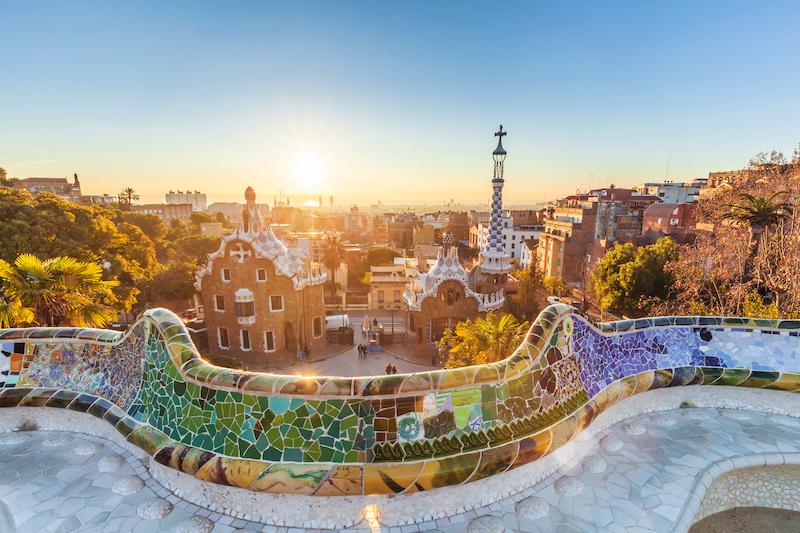
Arenys de Mar - Barcelona
Instead of driving directly to Barcelona via the coast, we decide to make a detour via the inland. From Arenys de Mar, we drive through Parc del Montnegre i el Corredor to Montseny and the rural town of Vic. If you are lucky, there is a market in Vic and you can taste the local sausages 'embotis'. Vic was occupied by the Romans at the end of the 3rd century B.C., so you can see the remains of a Roman temple. The bishop's seat has been in Vic since the 6th century. The cathedral is an absolute must see.
Via winding roads through beautiful natural areas, we reach the beating heart of Catalonia: Barcelona. This city is the highlight of many trips to Spain and we could not ignore Barcelona on our road trip. Barcelona not only rivals Madrid in terms of culture, commerce and sport, but also many European cities. The sights in the city are too many to list, but absolute must-sees are the Palau Nacional, the Sagrada Familia, Barcelona Cathedral and La Rambla, Spain's most famous street. Be overwhelmed by the vibrant atmosphere of Barcelona.
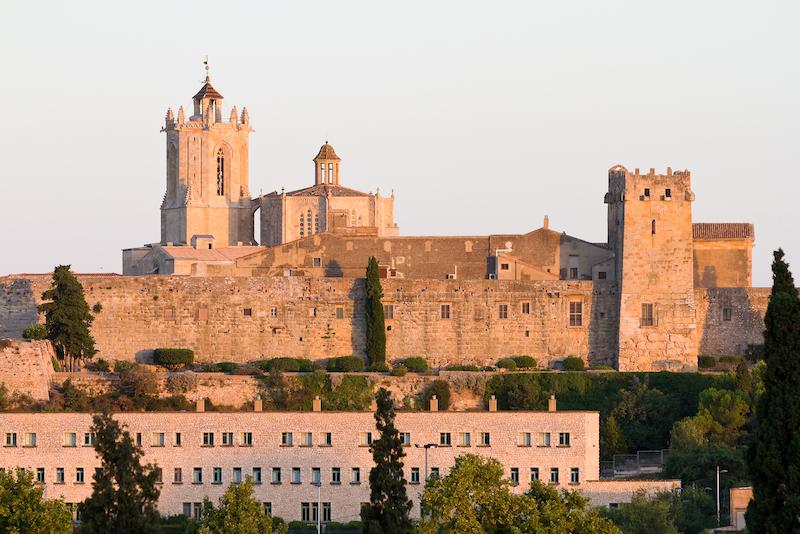
Barcelona - Tarragona
After Barcelona, we follow the coastline Costa Daurada to Tarragona. The Costa Daurada, 'the Golden Coast', is so called because of its many golden beaches. Along the coast you will find numerous charming seaside towns. Sitges is one of them. Sitges has no less than nine beaches and many locals go there to rest. Along the Passeig boulevard, there are many cosy cafes and restaurants. Sitges is also known for its Modernista architecture. Santiago Rusiñol, a Modernista artist, left his unique collection of ceramics, sculptures and paintings to the Museu Cau Ferrat. The medieval town of Tarragona is undoubtedly the highlight of the Costa Daurada.
From Tarragona the Romans left on their conquest of the peninsula. They left behind many beautiful remains in Tarragona such as a Roman amphitheatre and forum. In the Museu Nacional Arquelogic you will find the most important collection of Roman objects in Catalonia. Also the cathedral, the Font del Centenari and the Monument as Castellers are nice attractions.


